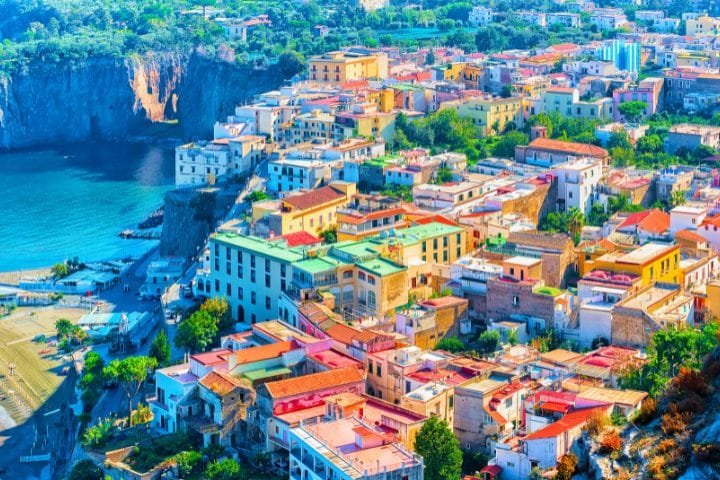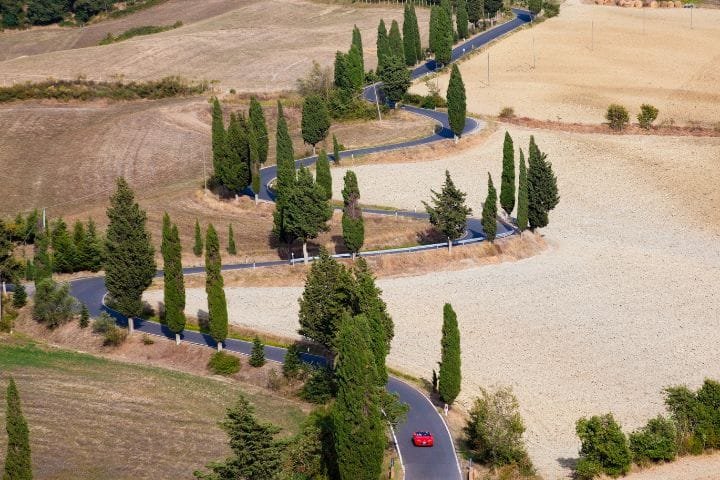How to Avoid ZTL Zones in Italy: Essential Driving Tips for Tourists

by Asia A. | Last Updated December 11, 2025
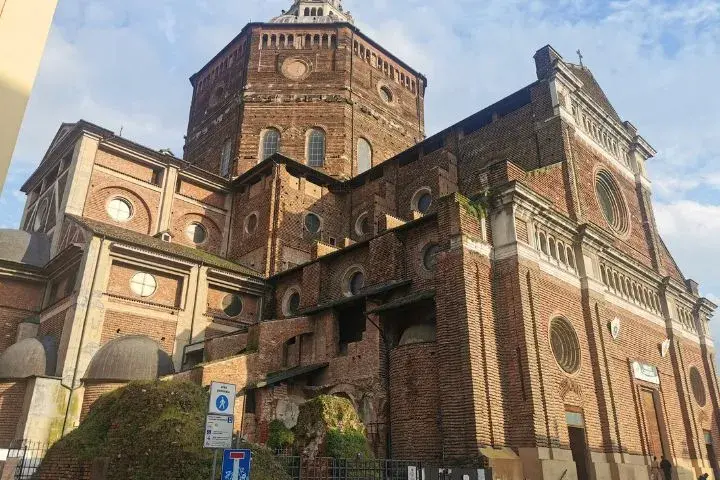
Ciao! As someone who has spent over two decades navigating Italy’s complex driving regulations and helping countless tourists avoid expensive ZTL violations, I can tell you that learning how to avoid ZTL zones in Italy ranks among the most crucial skills for any foreign driver exploring this beautiful country.
Here’s what catches most tourists completely off-guard: ZTL (Zona a Traffico Limitato) zones are restricted traffic areas that can result in fines ranging from €80-200 per violation, with some tourists receiving multiple fines for a single journey through connected ZTL areas. The cameras are automated, tickets arrive months later at home, and appealing violations from abroad proves nearly impossible.
Yet despite these serious financial consequences, most rental car companies provide minimal ZTL education, GPS systems often lack updated ZTL data, and many tourists discover these restrictions only after receiving hefty fines weeks after returning home.
The real challenge with ZTL zones lies in their inconsistent enforcement times, varying restrictions by city, and the fact that entry points aren’t always clearly marked for foreign drivers unfamiliar with Italian traffic signage.
Before diving into how to avoid ZTL zones effectively, you need to understand exactly what you’re up against—and why these restrictions exist in the first place.
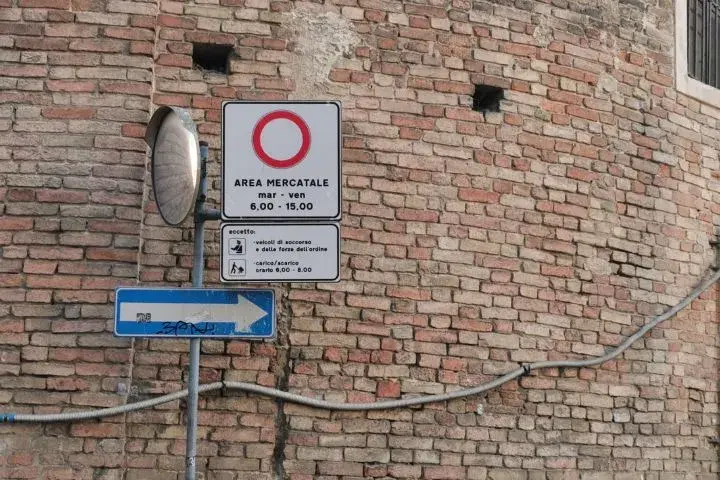
Understanding ZTL Zones: What Every Tourist Must Know
ZTL zones represent Italy’s solution to historic city center congestion, restricting vehicle access to preserve medieval architecture and improve air quality in urban cores. These limited traffic zones exist in virtually every Italian city with historical significance, from major destinations like Rome and Florence to smaller towns throughout Tuscany and Umbria.
The legal framework governs ZTL enforcement through automated camera systems that photograph license plates entering restricted areas. Each violation generates an automatic fine that gets mailed to the registered vehicle owner, which means rental car companies forward these penalties to tourists months after their Italian vacations end.
Enforcement variations create complexity because ZTL restrictions operate on different schedules depending on the city. Some zones restrict access 24/7, others only during business hours, and many have weekend exemptions or seasonal variations. Rome’s ZTL operates Monday-Friday 6:30 AM-6:00 PM, while Florence enforces restrictions Monday-Friday 7:30 AM-7:30 PM, with some areas extending to Saturday enforcement.
The geographic scope covers historic city centers, areas around major monuments, and environmentally sensitive zones. In Rome, the ZTL encompasses the entire historic center, including areas around the Colosseum, Pantheon, and Vatican vicinity. Florence’s ZTL covers the medieval city center, while Venice’s mainland Mestre has its own restrictions separate from the island city.
Permission exceptions exist for residents with special permits, delivery vehicles during designated hours, emergency services, and certain hotel guests with pre-arranged access. However, these exceptions rarely apply to tourists, and attempting to enter without proper authorization guarantees expensive violations.
The financial impact extends beyond initial fines because each camera entry point generates separate violations. Tourists driving through Rome’s historic center might trigger multiple cameras, resulting in several hundred euros in combined penalties. I’ve helped travelers who received over €800 in ZTL fines from a single afternoon of sightseeing, shocking, right?!
Camera saturation in cities like Florence means that even short routes can trigger multiple violations. During my time living in Rome, I watched a Canadian couple unknowingly enter three different ZTL cameras within a ten-minute drive, each generating separate €187 fines that totaled over €560 plus rental car processing fees.
🛑 Know the Basics of ZTL Before You Drive
Learn how ZTL works, why it exists, and what rules apply to tourists.
- Start with Italy’s full driving laws, documentation, and rules → Driving in Italy: Complete Guide
- Understand how ZTL zones are enforced and who can enter legally → Italy ZTL Zones Driving Guide
Recognizing ZTL Zone Signs and Boundaries
Visual identification of ZTL zones requires understanding Italian traffic signage that may seem confusing to foreign drivers. The standard ZTL sign features a circular design with “ZTL” text, restricted hours, and often includes symbols indicating permitted vehicles or time periods.
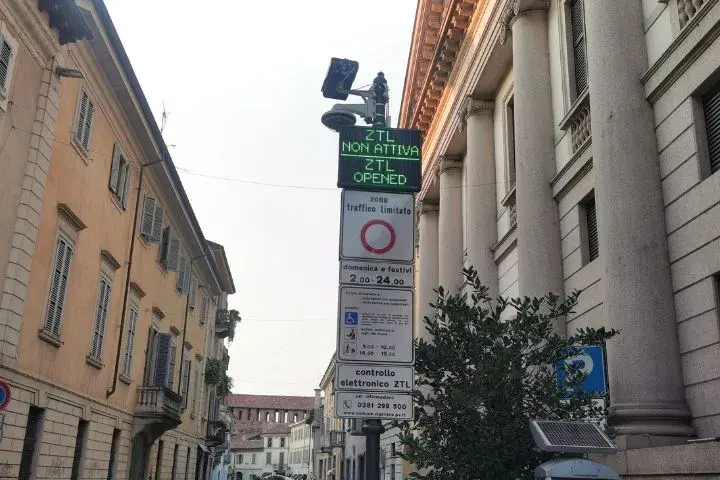
Electronic displays above many ZTL entry points show the current restriction status through LED panels. Green lights typically indicate open access, while red lights signal restricted periods. However, these electronic signs aren’t universal, and many ZTL zones rely solely on posted signs that tourists often miss.
Boundary markers can be subtle, especially in historic areas where modern signage must blend with medieval architecture. Some ZTL zones use road surface markings, painted lines, or small posts that foreign drivers might overlook while navigating unfamiliar streets.
Camera positioning typically occurs at all ZTL entry points, though cameras aren’t always visible or obvious. Many enforcement cameras are integrated into existing street furniture or positioned discreetly to avoid visual pollution in historic areas.
Geographic apps and modern GPS systems increasingly include ZTL data, but accuracy varies significantly. Some navigation apps provide ZTL warnings, while others route drivers directly through restricted zones. I always recommend cross-referencing multiple sources when planning routes through Italian cities.
My personal experience taught me this lesson when Google Maps routed me through Rome’s Trastevere neighborhood ZTL during restricted hours in 2017. Despite using current technology, the app completely ignored the restrictions, and I only realized my mistake when I spotted the cameras. Fortunately, I was familiar with the area and immediately found an alternate route, but many tourists wouldn’t recognize the signs until it was too late.
Time-based variations complicate recognition because the same entry point might be legal during certain hours and restricted during others. Posted signs show permitted hours, but interpreting Italian time formatting and understanding local conventions requires careful attention.
Plan Your Trip with Our Favorite Booking Tools
Using GPS and Apps to Avoid ZTL Zones in Italy
Modern navigation systems offer varying levels of ZTL integration, with some providing excellent restriction awareness while others completely ignore these zones. Google Maps has improved ZTL recognition significantly, though updates don’t always reflect the latest boundary changes or seasonal modifications.

Specialized apps like Waze, TomTom, and Garmin often include ZTL data, but effectiveness depends on local user contributions and official data integration. Some apps allow users to report ZTL violations, helping build community awareness of problematic areas.
Rental car GPS systems frequently lack updated ZTL information, making them unreliable for restriction avoidance. Many rental companies provide basic navigation devices that route drivers through ZTL zones without warnings, leading to expensive violations.
Smartphone integration through Apple CarPlay and Android Auto can provide better ZTL awareness than standalone GPS devices, especially when using updated navigation apps with current restriction data.
Offline maps become essential when cellular coverage is poor or expensive, but offline navigation often lacks real-time ZTL updates. Download multiple mapping apps and ensure ZTL data is included in offline packages before traveling.
Route planning should include ZTL research before departure, identifying alternative routes that avoid restricted zones entirely. This proactive approach prevents reliance on potentially outdated navigation technology during stressful driving situations.
City-Specific ZTL Strategies
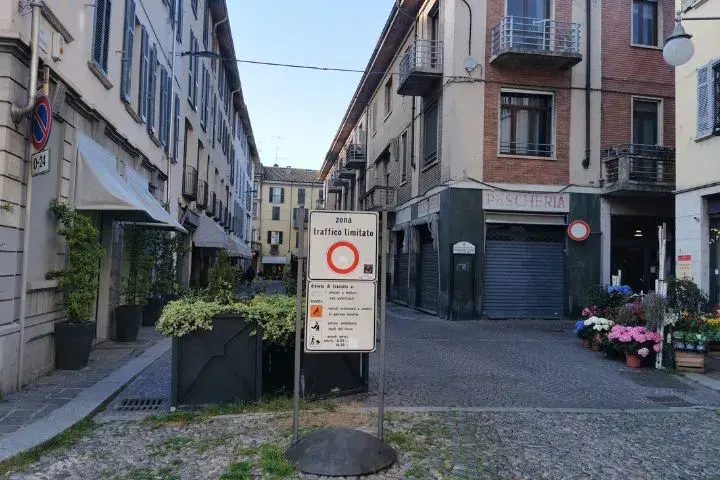
Rome’s complex system includes multiple ZTL zones with different restrictions and enforcement schedules. The historic center ZTL (Fascia Verde) operates Monday-Friday 6:30 AM-6:00 PM, while the Tridente area has additional restrictions. Tourist destinations like the Colosseum and the Vatican are surrounded by ZTL zones that can trap incautious drivers.
Florence enforcement covers the medieval city center with restrictions Monday-Friday 7:30 AM-7:30 PM, extending to Saturday in some areas. The ZTL boundary follows the ancient city walls, making navigation challenging for drivers unfamiliar with the historic layout.
Venice mainland (Mestre) has its own ZTL restrictions separate from the island city, affecting tourists who drive to Venice and park on the mainland. These restrictions often surprise visitors who expect only the island portion to have driving limitations.
Milan’s Area C combines pollution restrictions with limited traffic zones, charging entry fees during restricted hours while also enforcing ZTL-style access limitations. This hybrid system creates additional complexity for tourists unfamiliar with Italian urban driving regulations.
Regional variations exist throughout Italy, with virtually every historic town implementing some form of ZTL restriction. Tuscan hill towns, Umbrian villages, and Amalfi Coast communities each have unique systems that require specific research and planning.
Small town surprises can catch drivers off guard because even tiny villages may have ZTL restrictions. I once helped an American family who received fines from San Gimignano, a small Tuscan town, they’d never heard of having ZTL zones. Their rental car GPS showed it as a simple village road, but the medieval center was completely restricted during their visit.
Hotel coordination becomes crucial because many accommodations within ZTL zones can arrange temporary access permits for guests. However, these arrangements require advance notice and proper documentation, making spontaneous hotel changes problematic.
🏙 Tips for Italy’s Most Complex ZTL Cities
Each major city handles ZTL differently — optimize your route before entering.
- Venice: where you must park before the ZTL → Where to Park in Venice
- Rome: navigating Centro Storico rules → Where to Park in Rome
- Milan: understanding Areas A, B, C → Where to Park in Milan
Alternative Transportation and Parking Solutions
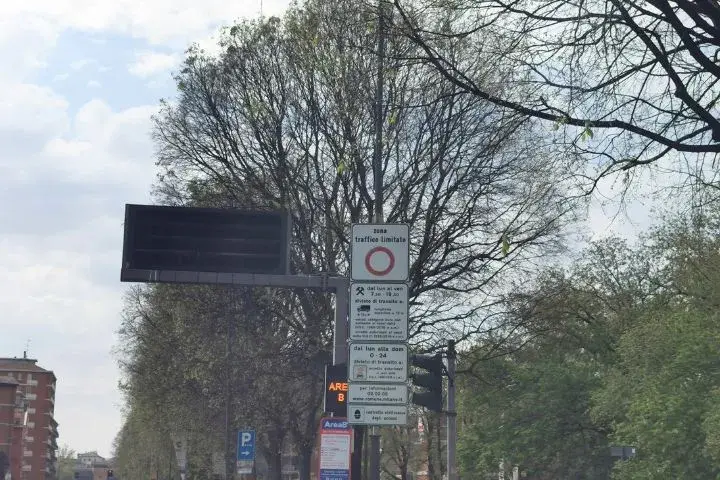
Park and ride systems offer excellent alternatives to driving in ZTL zones, with many Italian cities providing convenient parking areas connected to public transportation. These facilities typically cost €1-3 per hour compared to ZTL fines that can exceed €200 per violation.
Public transportation in Italian cities often provides better access to historic centers than driving, with buses, trains, and metro systems designed to serve areas where cars are restricted. Rome’s metro system, Florence’s buses, and regional trains offer convenient alternatives to ZTL navigation.
Peripheral parking outside ZTL boundaries allows tourists to park legally and walk into historic centers, often providing better access to pedestrian-only areas where cars can’t go, regardless of permits. Many of these parking areas offer reasonable daily rates compared to city center parking costs.
Hotel shuttle services and private transportation eliminate ZTL concerns entirely, though costs are higher than driving a rental car. Many hotels offer shuttle services to major attractions, while private drivers can navigate ZTL zones legally with proper permits.
Bicycle rentals and electric scooters provide excellent alternatives for exploring historic centers without ZTL restrictions. Many Italian cities have embraced bike-sharing programs and electric mobility options that work well for tourist exploration.
Walking tours and organized transportation remove ZTL concerns while providing guided experiences that enhance cultural understanding. These options often prove more educational and less stressful than attempting to navigate complex driving restrictions.
Emergency Procedures and Fine Management
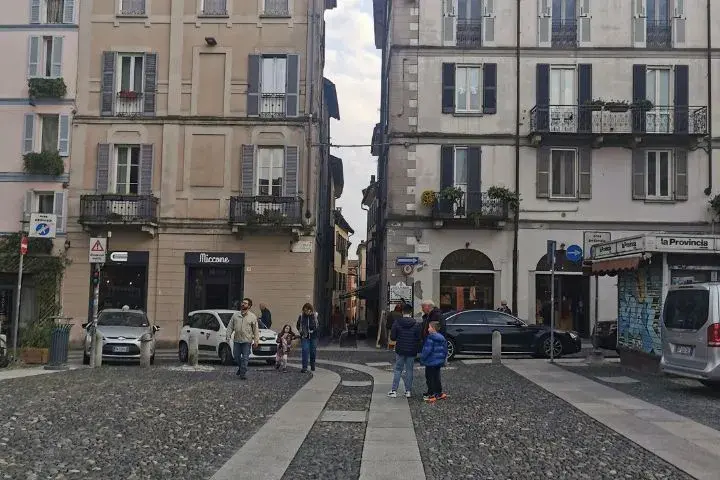
Violation notification typically arrives 30-90 days after the infraction, sent to the address associated with the rental car agreement. These notices include violation details, photographic evidence, and payment instructions, though language barriers can complicate understanding.
Appeal procedures exist for ZTL violations, but success rates are low for tourists who cannot provide compelling evidence of emergency circumstances or technical malfunctions. The appeals process requires Italian language skills and understanding of local legal procedures.
Payment methods for ZTL fines vary by municipality, with some accepting online payments while others require bank transfers or postal payments. Delayed payment often results in additional penalties that can double or triple the original fine amount.
Rental car company involvement adds complexity because companies typically charge administrative fees for processing violation notices, often €25-50 per incident on top of the actual fine. Some companies automatically charge credit cards on file, while others require separate payment arrangements.
Credit card shock happens months after travel when tourists discover multiple ZTL charges on their statements. I helped a British couple who found €400 in administrative fees alone from Hertz, separate from the actual €600 in ZTL fines, because they’d triggered eight different cameras during their Rome visit. The rental company charged them separately for each violation notice they processed.
Legal consequences of unpaid ZTL fines can include collection agency involvement, credit impact, and potential complications for future European travel. While enforcement across borders varies, unpaid fines can create problems when returning to Italy or other EU countries.
Prevention strategies remain far more effective than fine management, focusing on route planning, technology use, and alternative transportation to avoid ZTL zones entirely. The stress and expense of violation management far exceed the cost of proper trip planning and ZTL avoidance.
Technology Tools and Resources
Smartphone apps specifically designed for ZTL avoidance include specialized navigation software that prioritizes restriction awareness over shortest routes. Apps like Citymapper, Moovit, and local Italian navigation tools often provide better ZTL integration than international alternatives.
Real-time updates through traffic monitoring services can provide current ZTL status information, though availability varies by city and technology platform. Some municipalities provide official apps or websites with current restriction information.
Offline resources become essential when cellular coverage is unreliable or expensive, requiring downloaded maps and ZTL information before traveling. Preparation should include multiple backup navigation options and printed maps showing ZTL boundaries.
Community resources through travel forums, social media groups, and local tourism offices provide current information about ZTL changes, enforcement patterns, and successful avoidance strategies. Fellow travelers often share recent experiences and updates about specific cities.
Professional services, including local driving guides, transportation consultants, and specialized tour operators, can provide expert navigation assistance for complex itineraries requiring ZTL awareness.
Emergency contacts should include rental car company information, local traffic authorities, and consular services in case of ZTL-related problems or violation concerns.
Planning Your Italian Road Trip with ZTL Awareness
Route design should prioritize ZTL avoidance from the initial planning stages, identifying alternative routes and transportation options for historic city centers. This proactive approach prevents stressful navigation decisions during travel.
Accommodation selection influences ZTL impact significantly, with hotels outside historic centers often providing easier access and parking without restriction concerns. However, hotels within ZTL zones may offer permit arrangements that make city center stays feasible.
Timing considerations affect ZTL enforcement schedules, with some zones offering access during evening hours, weekends, or seasonal variations. Understanding these patterns can help plan city visits during unrestricted periods.
Backup transportation plans should include public transit options, walking routes, and alternative access methods for situations where ZTL avoidance becomes impossible or impractical.
Budget planning should account for potential ZTL-related costs, including parking fees, public transportation, and contingency funds for unexpected violations or alternative transportation needs.
Documentation preparation includes saving ZTL maps, restriction schedules, and emergency contact information for quick reference during travel when navigation decisions must be made quickly.
Plan Your Trip with Our Favorite Booking Tools
🗺 Plan Smart Routes That Avoid ZTL Completely
A ZTL-aware road trip begins with proper route planning.
- Overview of Italy’s driving laws, city rules, and regulations → Driving in Italy: Complete Guide
- Highway rules that affect approach routes to ZTL cities → Italy Toll Roads & Telepass Explained
Final Words
Learning how to avoid ZTL zones in Italy transforms from a bureaucratic necessity into an essential skill that protects your travel budget and reduces stress during Italian road trips.
After helping countless tourists navigate these restrictions over the past decade, I can confidently say that proper ZTL awareness makes the difference between a smooth Italian driving experience and an expensive, stressful ordeal.
The key to successful ZTL avoidance lies in understanding that these zones exist to preserve Italy’s incredible historic heritage while managing modern traffic demands.
Rather than viewing ZTL restrictions as obstacles, smart travelers recognize them as opportunities to explore alternative transportation methods that often provide better access to pedestrian-friendly historic centers.
Remember that ZTL zones are not designed to trap tourists or generate revenue – they’re legitimate traffic management tools that protect irreplaceable cultural sites from vehicle damage and pollution.
The cameras, fines, and restrictions exist because other traffic management methods have proven insufficient for preserving these UNESCO World Heritage areas.
Plan ahead, use appropriate technology, and consider ZTL avoidance as an integral part of your Italian travel strategy rather than an afterthought. The freedom and financial protection that comes from proper ZTL awareness far exceeds the minor inconvenience of advance planning and route research.
Buona strada e guida sicura! Good roads and safe driving!
FAQs on How to Avoid ZTL Zones in Italy
What exactly is a ZTL zone, and why do they exist in Italy?
ZTL stands for “Zona a Traffico Limitato” (Limited Traffic Zone) – restricted areas in Italian city centers designed to preserve historic architecture and reduce pollution.
These zones use automated cameras to monitor vehicle access during restricted hours, typically covering medieval city centers and areas around major monuments.
They exist because Italy’s UNESCO World Heritage sites need protection from vehicle damage and congestion, making them essential for cultural preservation rather than revenue generation.
How much do ZTL fines cost, and when will I receive them?
ZTL fines typically range from €80 to €200 per violation, with each camera entry generating a separate fine. You’ll receive violation notices 30-90 days after the infraction, mailed to your home address through the rental car company.
The real shock comes from multiple violations – tourists often trigger several cameras in a single journey, resulting in combined fines exceeding €500. Rental companies also charge administrative fees of €25-50 per violation on top of the actual fines.
Can my GPS or smartphone app help me avoid ZTL zones?
Modern GPS systems and apps have varying levels of ZTL integration. Google Maps has improved significantly, but isn’t perfect – I’ve seen it route drivers through restricted zones despite current updates. Specialized apps like Waze sometimes provide better ZTL awareness through community reporting. However, rental car GPS devices are notoriously unreliable for ZTL avoidance.
Always cross-reference multiple navigation sources and research ZTL boundaries manually before driving in Italian cities.
What should I do if I accidentally drive into a ZTL zone?
Exit the zone immediately using the shortest possible route to minimize additional camera violations. Don’t panic and make illegal U-turns or dangerous maneuvers – just continue to the nearest legal exit. Unfortunately, there’s no way to “undo” a ZTL violation once you’ve triggered a camera. The violation is automatic and irreversible.
Focus on preventing additional violations rather than trying to fix the initial mistake.
Are there any legitimate ways to drive in ZTL zones as a tourist?
Very limited options exist for tourist access. Some hotels within ZTL zones can arrange temporary permits for guests, but this requires advance coordination and proper documentation.
Emergency situations (medical emergencies, breakdowns) may provide grounds for violation appeals, though success rates are low. Delivery and service vehicles have designated access hours, but these don’t apply to tourist rentals.
The safest approach is to avoid ZTL zones entirely through alternative transportation and peripheral parking.
💬 We’d love to hear from you!
Have questions, tips, or personal travel stories to share? Drop them in the comments below — your insights help fellow travelers plan their adventures too.


